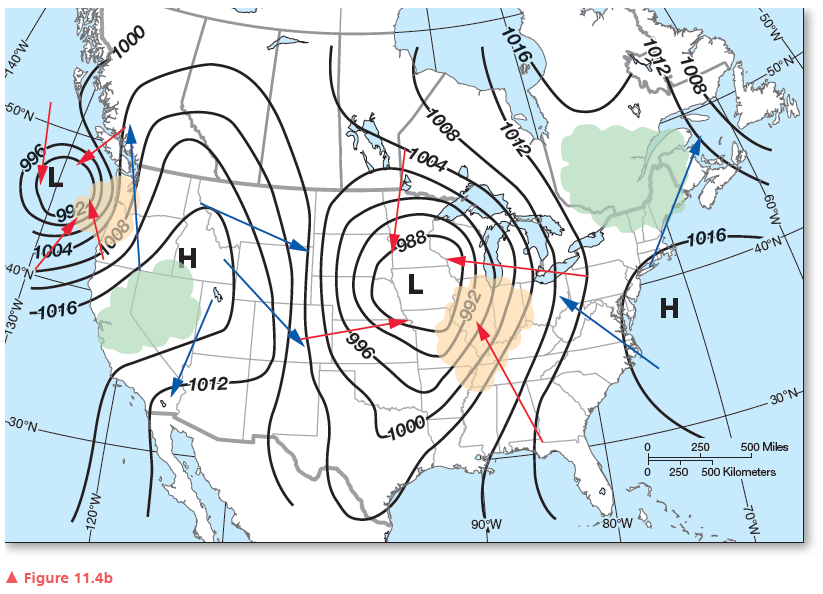Figure 11.4b shows the surface pressure conditions on October 18, 2007. Using a red pencil, draw at least two arrows to show the directions of winds flowing from the high-pressure center over Idaho and Nevada into the low-pressure center off of the Pacific Northwest, and draw two more arrows showing the directions of winds flowing from the same high-pressure center into the low-pressure center over Iowa. Remember that surface winds flow at a 45° angle to the pressure gradient. Draw at least two red arrows to show wind flowing out of the high-pressure center off the east coast toward the low-pressure center over Iowa. Using an orange pencil, shade at least two regions with closely spaced isobars, indicating a steep pressure gradient. Using a green pencil, shade at least two regions with
widely spaced isobars.
What will be an ideal response?

You might also like to view...
Compare and contrast the Darwin-Wallace mechanisms of natural selection and evolution with
Lamarck’s theory of inheritance of acquired characteristics. Explain how both of these concepts might apply to the development of long necks in giraffes. What will be an ideal response?
________ is the concept that describes how the Earth was shaped by sudden, violent events over a short period of time
A) Uniformitarianism B) Catastrophism C) Neptunism D) Differentiation
Which of the following is NOT a part of the climate system?
A) climosphere B) atmosphere C) biosphere D) hydrosphere E) lithosphere
Biomes are based on potential mature vegetation rather than the actual vegetation
Indicate whether the statement is true or false